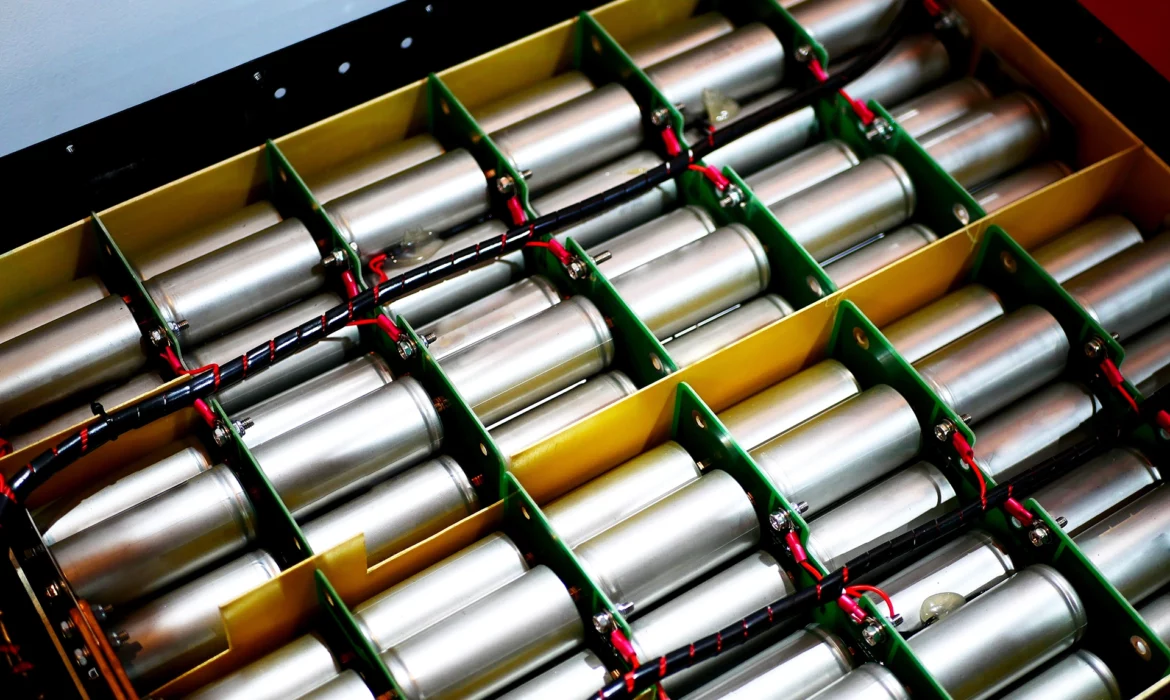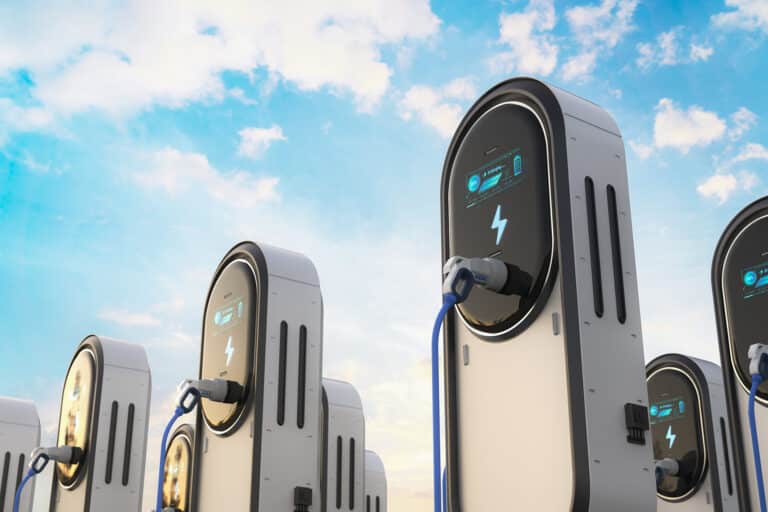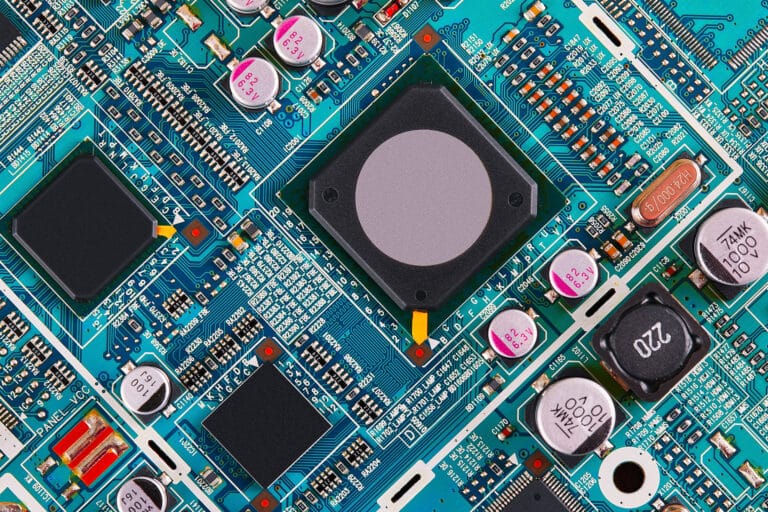
Increasing capacity and meeting decarbonisation goals – can it be done?
We discuss the cost and infrastructure considerations of switching to an all-electric fleet of off-highway vehicles.

Introduction
For EV manufacturers, one of the most crucial aspects of their strategy will be how they obtain their batteries, and how they ensure the quality of the batteries is up to the highest standard. For those that have decided to purchase complete Lithium-Ion Batteries (LIBs) rather than producing them in house, identifying the best supplier will give them the edge on their competitors, both financially and in terms of their business viability.
This guide has been created to share some procurement best practices specific to the sourcing of LIBs, with the aim of helping EV manufacturers identify the right supplier partner, as well as achieve the optimal technical and commercial outcomes.
Contents
Sign up to get the latest insights from Vendigital
1
Understand your need
Before embarking on a shopping spree, it is crucial to clarify the business requirements internally. This is to streamline the dialogues with supply market and avoid subsequent re-work or delay due to internal misalignment. Two main topics to focus on are Vehicle Functional Attributes and Target Volume Requirements.

What are the fundamental design principles of the vehicle? How does that shape the battery requirements?
Useful question:
Is the vehicle going to be Hybrid (HEV), Plug-in Hybrid (PHEV), or Battery Electric Vehicle (BEV)?
So what:
These are the three main types of electric vehicles.
HEV uses batteries to support acceleration, while PHEV and BEV use them as a primary or sole source of energy and power. The required energy to power ratio increases as the vehicle type transits to BEV, or fully electric.
Useful questions:
What’s the required range of the vehicle?
What level of battery power is required?
So what:
The longer the range within one charge, the higher capacity is required; the higher the speed requirement, the higher power is required.
For BEV, the common capacity is 30-80kWh, with a 100kW power, while for PHEV, the common range is 5-20kWh, with 40-60kW power. HEV still relies on ICE for propulsion therefore battery capacity and power matter less.
Useful questions:
Does the vehicle expect to operate in urban or rural areas?
What’s the operating temperature range?
Does the vehicle expect to be recharged frequently?
So what?
Urban and rural journeys often differ in distance and braking frequency.
The normal operating temperatures for Li-ion batteries are -20C to 60C, but extreme high or low temperatures tend to accelerate battery degradation, impacting both the capacity and power.
Vehicles may be recharged frequently or have a long full charge every few days. LFP / NMC batteries are agnostic to recharging pattern.
Useful questions:
What’s the budgeted battery cost?
What’s the strategic position on owning or leasing the batteries?
So what:
Batteries can be up to 45% of the full vehicle BoM (BEV). An accurate budgetary estimate helps kicking off the right dialogue with suppliers.
It also adds to the agility of organisational strategy to understand early on if owning batteries is a key requirement (for IP or other purposes), since if not, operational leasing is becoming a more and more popular option.
Useful questions
Does your organisation have specific sustainability goals, both within and beyond first life?
So what:
Within the battery first life, sustainability metrics such as carbon footprint can be tracked with a fit-for-purpose Battery Management System and analysed by specialised software solutions.
Beyond first life, batteries can be recycled for raw materials, reused, or traded with a professional vendor, each involving a specific segment of market.

What is the target volume ramp-up?
Customisation level – low:
If the product required is off-the-shelf but with a low volume with no clear ramp-up, a distributor may be preferred to get more favourable commercial and logistical terms
Customisation level – high:
For initial, low volume of a highly customised design, a prototype partner with strong R&D capabilities may be preferred
Customisation level – low:
Securing suppliers with the right capacity and manufacturing efficiency is crucial for a known high volume of off-the-shelf products
Customisation level – high:
Both capacity and R&D capabilities are crucial in a supplier partner in this scenario
Customisation level – evolving:
If the volume forecast is evolving but hard to commit to, and the customisation requirement is uncertain, it may be required to develop multiple supplier conversations in parallel and prepare for a multi-phase partnership from low to high volume. It is also possible to select a partner who would grow with your organisation to meet evolving capacity requirement.
2
Understand the market and strategic match
Once the internal requirements are aligned, they can be used to research the supply market and identify the type of suppliers, as well as supplier relationship, with the best strategic match. A few useful questions include:

What is the availability of the required technologies in the market?
What are the common types of chemistry and how do we know which one is the most suitable?
Among a full list of available or developing battery chemistry, there are two leading types of Li-ion batteries in the market – Lithium Iron Phosphate (LFP) and Lithium Nickel Manganese Cobalt Oxide (NMC), both referring to the material in the Cathode.
NMC – Lower unit cost but shorter lifespan
LFP – Higher unit cost but longer lifespan
So what – LFP is less expensive over a longer lifespan
NMC – Lower temperature threshold for thermal runaway
LFP – Good thermal stability and safety
So what – LFP is slightly safer than NMC especially regarding thermal resistance
NMC – Higher energy density
So what – For the same capacity, NMC battery will be smaller than LFP
LFP – Slower (dependent on use)
So what – LFP battery lasts longer with a slower degradation curve
LFP – Less toxic material
So what – LFP is easier to recycle with less toxic materials
NMC – Extreme cold temperature
LFP – When battery is of a low charge
So what – NMC performs better with colder temperatures while LFP is better when the state of charge is lower

Who are the top battery suppliers? What is the capacity/cost outlook? How do we expect the landscape to evolve?
Globally, there are three leading supplier, CATL, LG Energy Solution, and Panasonic, followed by some promising start-ups, such as SVOLT, Automotive Cells Company (ACC), Northvolt, and Britishvolt, while some OEMs are developing in-house cell production capabilities, such as Tesla and BYD.
It is worth looking into both the current production capacity of battery, as well as the upstream trends, risks, and other macro factors. For example, the demand for key battery materials, lithium, nickel, cobalt etc. is expected to rise sharply in the next decade to meet the global demand – the prices of these materials have already risen by 100% or more in 2021 and the trend is continuing.
If anticipated demand is strong and growing, it’s crucial to understand how potential supplier partners manage their own supply chain risk, such as whether there’s any partnership with raw material providers, any risk mitigation plan against potential supply chain challenges etc.
Current installed capacity – 166GWh (72% of total)
Positive factors – Government support, low manufacturing cost and access to raw materials (cobalt, lithium)
5 year prospect – Remain a leader in battery production and battery raw material capacity but with reduced market share
Current installed capacity – 126GWh (13% of total)
Positive factors – Existing plan of LG Energy Solution in Poland, additional plants of Tesla and CATL in Germany
5 year prospect – Growing by more than 50% with a high utilisation rate
Current installed capacity – 63GWh
Positive factors – Increase in government subsidies, infrastructure bill (charging) and reserves of raw materials in Canada (cobalt, lithium, and nickel)
5 year prospect – Market share growing by more than 800%
Current installed capacity – 72GWh
Positive factors – Home to four of the biggest cell manufacturers
5 year prospect – Growing but at a lower rate due to preference for hybrids
Current installed capacity – Minimal
Positive factors – India: new production linked incentive scheme for advanced chemistry cell manufacturing
5 year prospect – Growing but at a lower rate
3
Assess technical compatibility
To understand the technical compatibility of a product to your requirements, the following technical matrix could be used as a reference point.
Potential questions
What materials are used e.g. cathode and anode?
Is there any other chemistry application contained in the battery?
Potential questions
What’s the power (kW)?
What’s the capacity (kWh)?
What’s the energy density (kWh/L)?
What’s the specific energy (kWh/kg)?
What’s the voltage range?
What are the physical dimension and weight?
Potential questions
How long does it take to charge the battery (what is the C Rate)?
Potential questions
What is the self-discharge rate per month (calendar degradation)?
Potential questions
What are the optimal temperature ranges for charging and discharging?
Potential questions
Are you capable of screening cells and/or cell impedance matching?
Potential questions
How many charge cycles is the battery expected to achieve?
Potential questions
What are the disposal recommendations of the battery?
What’s the toxic content of the materials and are they easy to separate?
Potential questions
Are the batteries cylindrical, prismatic, pouch, or other?
4
Evaluate possible commercial models
Depending on the business requirements, potential commercial models are:
It’s an attractive option for consumers if anticipated usage of the vehicle is high, since the purchase costs are spread thin across a high mileage. It also gives the opportunity to drive value from second life options. However, it represents a significant, upfront investment.
Pros:
• Purchase cost can be spread thin if the usage is intense over a long period
• Opportunities to drive value from second life options
Cons:
• High upfront investment and significant asset to balance sheet
If a consumer’s anticipated usage is light, it may be more economical to lease the batteries, where the leasing costs vary per usage. It also avoids the upfront cash outlay. However, there are very few offerings of such services – Renault offers battery leasing for cars, while for commercial vehicles the offering is still in embryo forms.
Pros:
• Leasing cost can be low based on a light usage profile
• No need for high upfront investment or significant asset in balance sheet
Cons:
• Leasing offerings are still few but growing
Other common commercial discussion points are listed in “Common challenges”.
5
Common challenges

High and rising material cost
Costs of batteries are rising, and the trend is continuing. It is driven by rising raw material costs, increase in demand, constraints in global capacity and supply chain disruptions, to name a few. In the commercial discussion, please address these key cost drivers accordingly.
For example, for raw materials, try establishing an indexation arrangement where the raw material prices fluctuate with a credible, public index by an agreed, fixed margin.
To meet ramped up demand, try securing an advance agreement on future volume. It may require advance ordering and partial and full prepayment.
To lessen the impact of potential supply chain disruptions, try reviewing the logistics route of your supply and consider diversifying supply among multiple suppliers if possible.

Uncertain maintenance costs out of warranty
Depending on the offered warranty period from OEM, you may need to cover some of the maintenance costs before battery replacement. It is then critical to be able to simulate the maintenance profile and costs for this gap period. Data may be collected from telematics of charging infrastructure, or under the guidance of OEM. In the meanwhile, battery usage could be optimised such as by managing charging and discharging pattern, i.e., frequent short charging or long full charge every few days etc.

Recycling and second life
As large quantities of EV batteries are being placed in the market, reuse market of the same is also forecast to grow rapidly. As of 2022, the total addressable reuse market is 90GWh, with CAGR of 21.7% until 2030.
At the end of battery first life, either a second application (reuse) or recycling for raw material can generate further value. The current reuse market is organised regionally, but not mature enough to support a robust pricing model based on state of health of batteries, but rather driven by demand and supply and other application-specific requirements, such as the form factor. As to recycling, it is subject to both the weight of materials in a battery and the ease of extraction. Current LIB capacity is c.a. 828k tonne, with a forecast CAGR of 13.3% until 2030.
Download our sourcing guidance
Our guide provides all the information contained here, along with a cheat sheet to help determine how requirements impact battery costs.
Sign up to get the latest insights from Vendigital
Related Insights

We discuss the cost and infrastructure considerations of switching to an all-electric fleet of off-highway vehicles.

EV makers in the UK and Europe are warning that Zero Emission Mandates are simply not doable and subdued levels of demand could force them to close factories. Should the industry embrace Chinese capability before it’s too late?

In our latest report we examine the impact of power electronics and the importance of inverters in EV manufacturing.
Subscribe to our newsletter